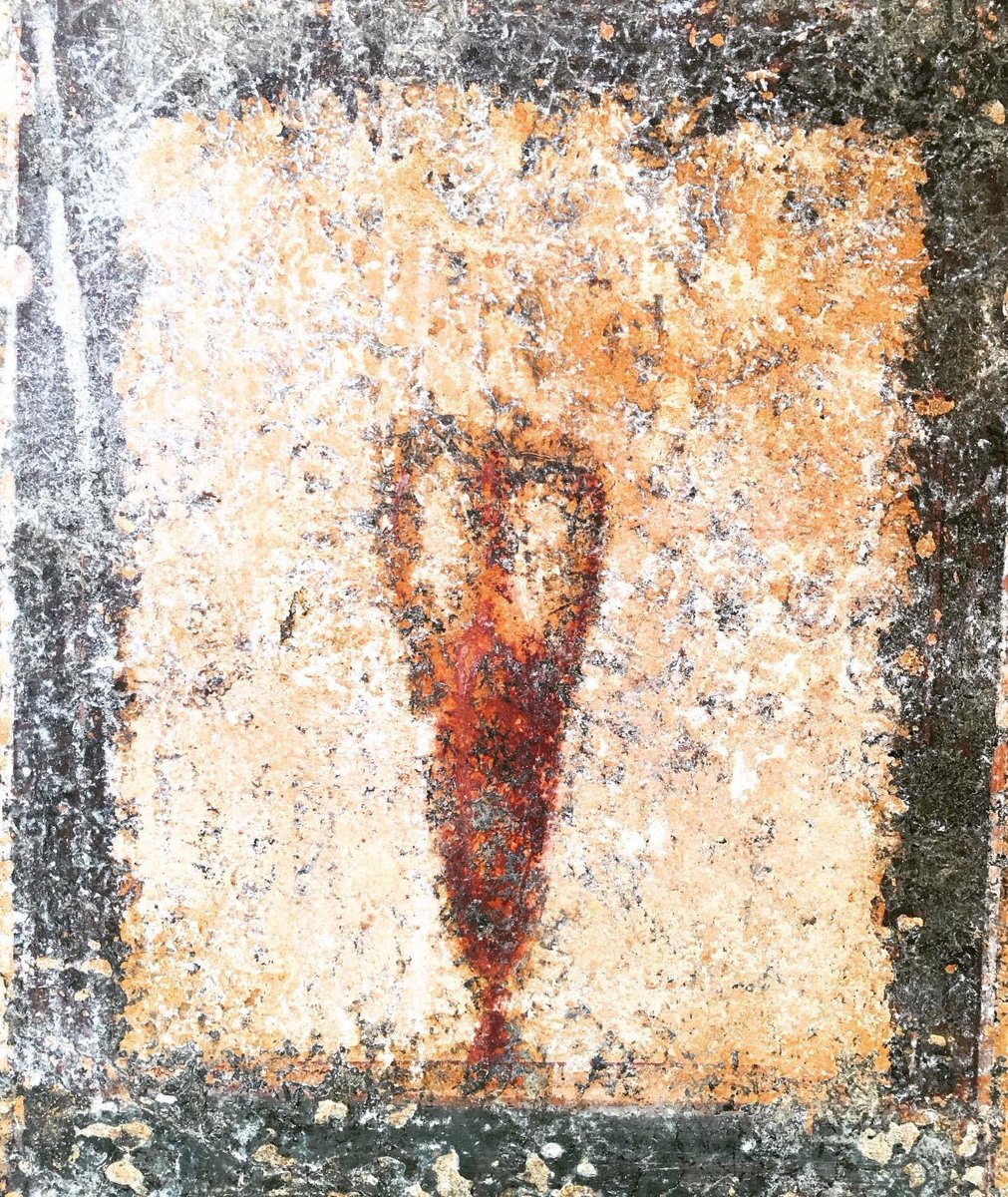A very small and unassuming fresco of a wine amphora painted on a cubiculum wall at Villa Arianna in Stabiae. Such a small and simple image but it signifies a lot: food; commerce; and shipping! #FrescoFriday #Pottery #Art #Archaeology #Mediterranean
Born of the Canaanite jar, the amphora is the world’s first commercial food packaging. It is a ceramic vessel, that comes in over 40 typologies, that contains up to 26 L, and they were used to contain and ship bulk foodstuffs all over the Classical Mediterranean.
The first time I set eyes on an amphora, many years ago, I fell madly in love. There’s something so graceful and statuesque about its form: large; shapely; and with strong shoulders. But there’s more to this form than just aesthetics; this form is all about function.
Amphorae were shaped specifically to fit into the holds of ships in interlocking formation so as to stabilize themselves but also the ship itself in rough seas.
The shape of the body was designed to empty the contents in an efficient manner as well: conical with a long neck for wine (Dr. 2/4 for eg) and globular with a short neck (Dr. 20 for eg) for olive oil.
The contents of the amphorae also determined if the vessel could be reused or if it should be broken up and recycled as wall fill or cooking tiles.
For archaeologists, broken amphorae sherds, which are often dubbed the archaeological garbage of the Mediterranean, are anything but garbage in the grand scheme of things.
Epigraphy and marks, in the forms of hand-written weights, customs signatures, and makers stamps, allow archaeologists to use the ceramic sherds as relative dating tools.
Whether it’s the vessel itself or the context it was found in, a rim-sherd with writing or stamp impressions in the clay gives archaeologists clues about food products, product origins, commercial relationships locally and abroad, and the approximate date of import/export.
So much information from a ceramic container! So the next time you’re on holiday anywhere on the Mediterranean and you see broken pieces of amphorae beneath your feet or in the vicinity of an archaeological site, you’ll know that it’s not just a piece or ceramic waste.
Amphorae are remnants of high volume food trade in the Graeco-Roman world! (Image by Farrell Monaco)

 Read on Twitter
Read on Twitter


